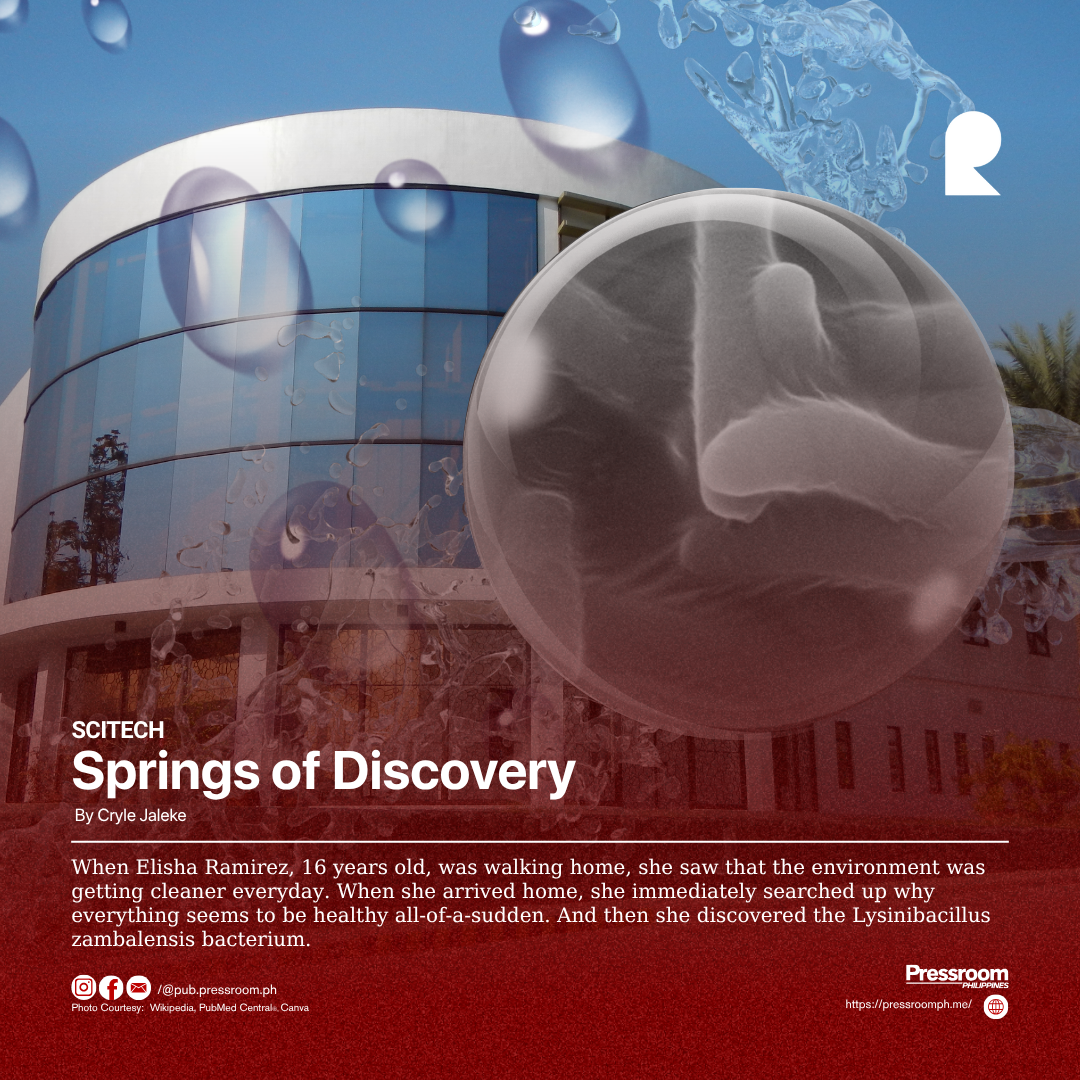𝘃𝗶𝗮 𝗖𝗿𝘆𝗹𝗲 𝗝𝗮𝗹𝗲𝗸𝗲, 𝗣𝗿𝗲𝘀𝘀𝗿𝗼𝗼𝗺 𝗣𝗛
When Elisha Ramirez, 16 years old, was walking home, she saw that the environment was getting cleaner everyday. When she arrived home, she immediately searched up why everything seems to be healthy all-of-a-sudden. And then she discovered the Lysinibacillus zambalensis bacterium.
This bacteria is real and it’s spreading right now. According to scientists from the Department of Science and Technology (DOST), this bacteria is currently being closely studied for its potential environmental and biotechnological effects.
While not yet classified as harmful, concerns have been raised about possible exposure among individuals living near alkaline springs—particularly in rural communities, where farmers, outdoor workers, children, and elderly residents frequently interact with natural water sources. It is the talk of the town.
Based on a recent survey conducted by the said esteemed institution, it reveals that a large number of places, such as high-pH springs and soils, untreated water sources, and high-alkalinity ecosystems gets affected with the positive impacts of this bacteria.
Meanwhile, DOST further announced that the public should be aware about these two core points pertaining the Lysinibacillus zambalensis bacterium: what is Lysinibacillus zambalensis bacterium and the positive effects of it.
In focus: What is Lysinibacillus zambalensis?
Obviously, there is more to this bacteria that needs to be understood. Based on the information from DOST, Lysinibacillus zambalensis is a newly discovered species of bacteria found in a hyperalkaline spring in Botolan, Zambales, Philippines. It is classified as an extremophile, meaning it can survive in extreme environments—specifically those with very high pH levels (alkaline conditions).
Similarly, the Department of Science and Technology – Philippine Nuclear Research Institute (DOST-PNRI), in a separate article emphasized the importance of this bacteria “The discovery of Lysinibacillus zambalensis opens new frontiers in understanding microbial life in extreme environments and its potential applications in biotechnology and environmental remediation.”
Zoom in: What are the positive effects of this bacteria?
In accordance with the information from DOST, the positive effects of the Lysinibacillus zambalensis are
industrial and biotechnological applications, environmental sustainability and protection, scientific and educational value, and climate resilience innovations.
Weighing all these facts, this all boils down to this: understanding the unknown is far better than fearing it.
Moreover, these facts can be deemed as essential knowledge for all Filipinos. As the late Ka Ernie Baron, the famous weatherman, and the super antenna inventor once said “Kung walang knowledge, walang power. (If there’s no knowledge, there’s no power).”
Indeed, being aware about these two core points pertaining the Lysinibacillus Zambalensis Bacterium can bring awareness and enlightenment to uncover truth, think over the better option, establish themselves two steps ahead and sail through life.
As a fitting climax to this, let us take what happened to Elisha Ramirez who discovere Lysinibacillus Zambalensis Bacterium and turned it into a way to spread awareness as a lesson. Stay safe, remain aware.






